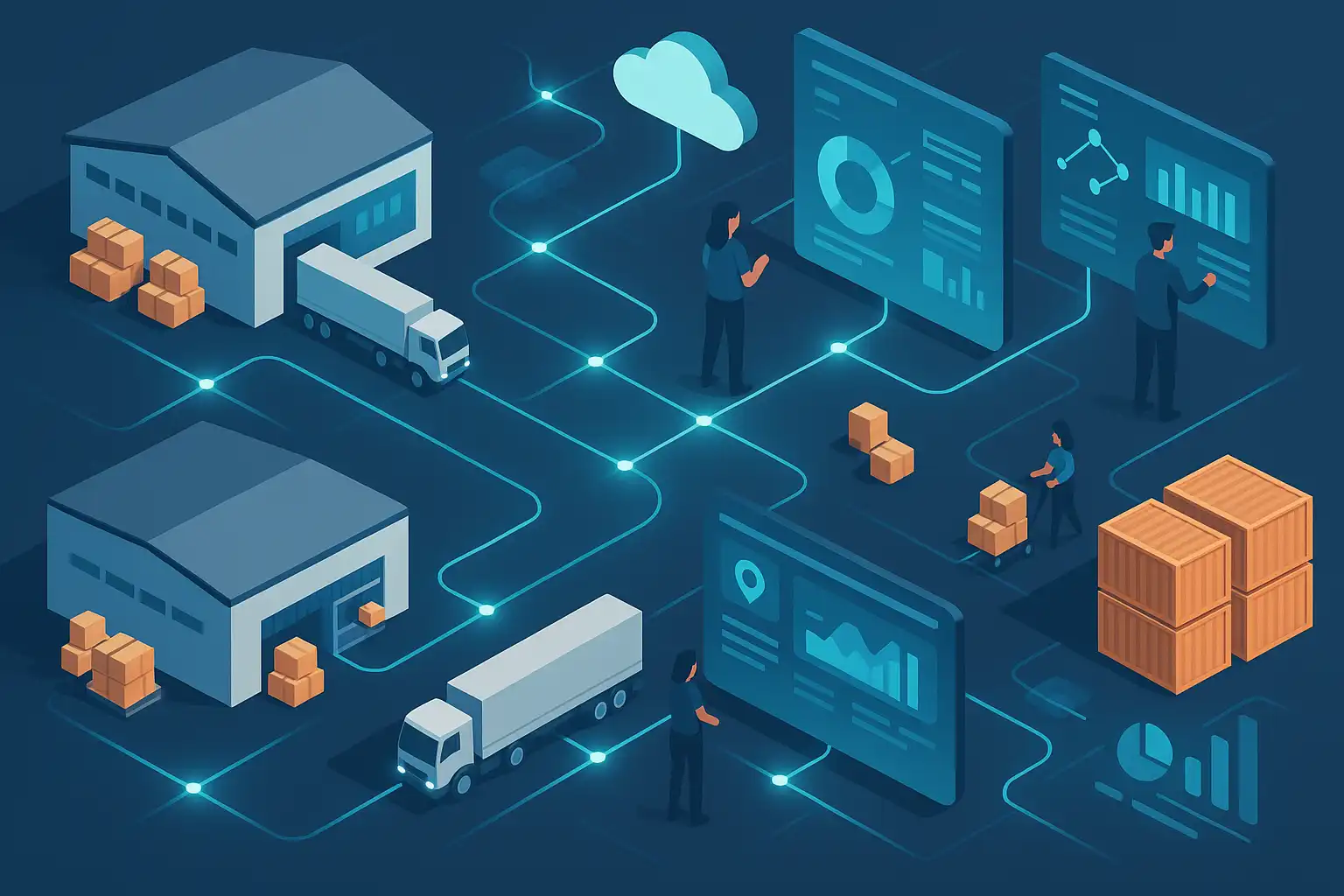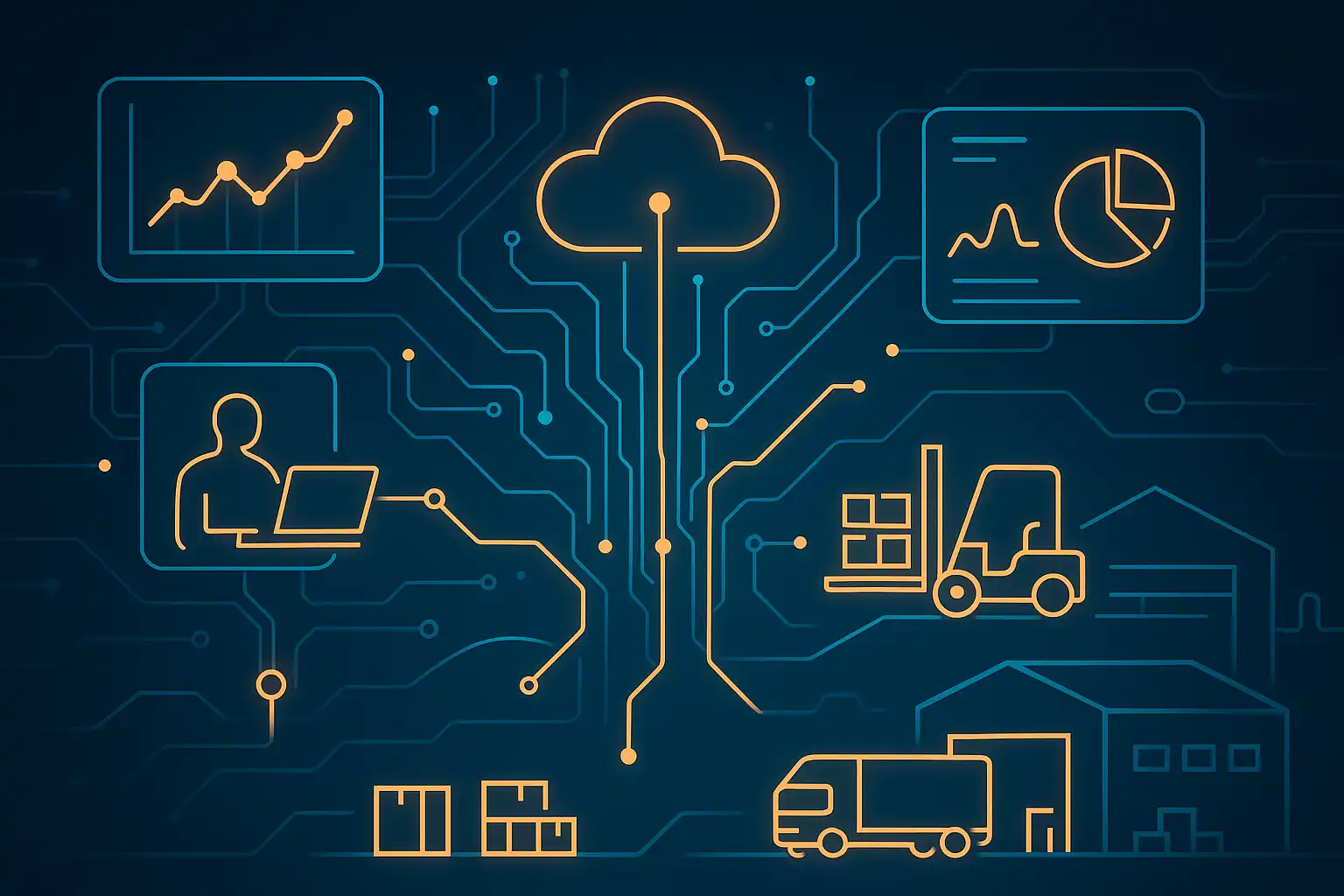
Supply chain analytics examples offer proven pathways for companies to save money and boost efficiency. Right from the start, firms like Deere & Company, Starbucks, and Intel have made bold moves using data-driven tools to reduce unnecessary expenses and streamline their operations. If you’re wondering how real businesses turn numbers into savings, or you want to know which analytics strategies work in procurement, inventory, and logistics, you’ll find clear answers here. This guide walks you through major supply chain analytics case studies for cost reduction, techniques that deliver measurable results, and the practical steps you can apply to your own operations.
What are some real-world supply chain analytics examples that reduce costs?
Major global companies have shown that supply chain analytics can lead to substantial cost savings and efficiency improvements. Deere & Company, for example, undertook a thorough process redesign and focused on network optimization. By analyzing their entire logistics flow, they reduced bottlenecks, eliminated redundant routes, and improved delivery speeds. This targeted effort led to lower operational expenses and better use of logistics resources.
Intel made use of Radio Frequency Identification (RFID) technology, which allowed them to track inventory in real time. With more accurate forecasting and smarter inventory management, they avoided overstocking and reduced the costs tied up in excess inventory. This move not only cut costs but also improved customer satisfaction by ensuring stock was available when needed.
Starbucks took a different but equally effective approach. The company identified issues with late deliveries, which risked stockouts and unhappy customers. By switching to new third-party logistics providers (known as 3PLs) and implementing strict delivery performance measurements, Starbucks improved reliability and addressed previous delivery delays. These actions prevented lost sales while reducing costs associated with emergency shipments.
Other companies such as AGCO and Terex focused on supplier management and network optimization. By analyzing procurement and shipping practices, they renegotiated contracts and optimized order sizes, leading directly to lower expenses. Additionally, vendors like Avaya and Sunsweet Growers adopted cloud-based analytics platforms to enhance supply chain visibility, which improved collaboration and created opportunities for sustained savings over time.

How do supply chain analytics help identify and eliminate inefficiencies?
Analytics bring clarity to complex supply chain operations. Companies use data to study lead times, order quantities, transport routes, and supplier performance. For example, by mapping out the entire process and measuring key data points, managers can identify where delays or excessive costs occur. Deere & Company’s review of their logistics network uncovered bottlenecks that slowed movement and increased costs. Fixing these specific issues led to substantial improvements.
Starbucks monitored delivery metrics and could quickly see when and where late deliveries happened most often. This allowed them to address the root causes and prevent future disruptions. Companies like Terex and AGCO analyzed procurement cycles, shipping schedules, and costs, then adjusted order sizes or negotiated better rates with transport suppliers, directly targeting high-cost areas. These examples show how analytics-informed strategies don’t just trim expenses once—they set the stage for ongoing improvements.
Common steps companies follow for supply chain cost reduction
- Map the entire supply chain process from procurement to delivery.
- Collect key performance data on inventory, shipping, and supplier reliability.
- Identify bottlenecks, delays, or excess inventory using analytics tools.
- Use forecasting models to align inventory with actual demand.
- Review contracts and partnerships, looking for better terms based on data.
- Implement new technologies for real-time tracking and process automation.
- Continuously monitor results and adjust processes as needed.
This process is cyclical and repeats as businesses and markets change. By following these steps, companies can adapt quickly while avoiding waste.
Which supply chain analytics tools and techniques deliver the best cost savings?
Some tools stand out for consistently producing results. Transportation Management Systems (TMS) help firms choose the most efficient routes and modes of transport, reducing shipping costs and improving delivery times. Using TMS, companies can compare rates, track shipments in real time, and analyze delays to quickly resolve issues. RFID technology, as used by Intel, provides real-time visibility into stock levels and movements, preventing out-of-stocks and minimizing excess inventory.
Cloud-based analytics platforms give companies the ability to aggregate data from various sources. Firms like Avaya and Sunsweet Growers have used these platforms to improve communication between suppliers, manufacturers, and retailers. With better visibility, they can anticipate disruptions, adjust orders, and eliminate unnecessary steps—each leading to cost savings.
Forecasting models, powered by historical data and artificial intelligence, help balance inventory levels. Proper forecasting ensures a company doesn’t overstock, which ties up money and risks waste, or understock, which leads to lost sales. When such models are integrated into supply chain planning, holding and shortage costs both drop.
For organizations aiming to align their data initiatives with business objectives, reviewing data strategy alignment with business goals can serve as a foundation for smarter supply chain decision-making.
Key supply chain analytics techniques
- Diagnostic Analytics: Identify what is causing supply chain issues by reviewing historical data.
- Predictive Analytics: Use trends and patterns to forecast future demand or potential disruptions.
- Prescriptive Analytics: Recommend actions, such as adjusting order sizes or rerouting shipments, based on data insights.
- Descriptive Analytics: Provide clear snapshots of current supply chain performance for management review.

What benefits do real-world supply chain analytics examples demonstrate?
These examples highlight several benefits:
- Lower transportation and logistics costs thanks to optimized routes and better carrier choices.
- Reduced inventory holding costs by matching stock levels to actual demand and preventing excess.
- Improved supplier performance through clear measurement and better vendor management strategies.
- Faster response to market changes, making the supply chain more resilient and adaptable.
- Enhanced visibility across the entire supply chain, allowing for proactive rather than reactive management.
One area often overlooked in supply chain analytics is the value of external support. If your organization is considering ways to manage large volumes of supply chain data, exploring outsourcing data management cost quality can provide both cost savings and improved data quality, which in turn supports better analytics outcomes.
Popular brands and sectors leading the way
Several industries have benefited from supply chain analytics, but consumer goods, electronics, and food & beverage are among the most successful. Companies like Starbucks, Intel, Deere & Company, and AGCO have paved the way by investing in analytics-driven solutions. They use everything from TMS and RFID to cloud analytics, setting examples for others to follow.
For businesses adopting new technologies, integrating platforms that enable real-time data access and advanced analytics—like AWS cloud data engineering analytics—can accelerate improvements across procurement, logistics, and distribution. These systems bring together the flexibility of cloud computing with the precision needed for supply chain analytics.
How can you apply supply chain analytics to your own business?
Start small by identifying where your supply chain spends the most. Collect data on inventory, shipping, lead times, and supplier performance. Once you have a clear picture, use analytics tools—many are now available as software-as-a-service (SaaS)—to spot patterns and outliers. Look for areas where costs spike or delays happen regularly, and investigate further. Implement specific changes, such as adjusting order quantities, rerouting shipments, or renegotiating contracts based on data findings.
If your goal is to achieve sustainable efficiency improvements, it’s wise to explore AI-powered business efficiency services, since these can automate repetitive tasks and identify cost reduction opportunities that are easy to miss manually.
As your analytics capabilities grow, you can tackle larger projects—like end-to-end process redesign, or supplier network optimization—to generate even bigger savings. The key is to treat analytics as an ongoing journey, not a one-off project.
Checklist for getting started
- Define your primary cost centers in the supply chain.
- Gather and clean relevant data.
- Choose analytics tools that meet your current needs and can scale over time.
- Train your team on how to use these tools and interpret the results.
- Start with one or two projects, test changes, and track the outcomes.
- Expand your use of analytics to other areas as you build confidence and see results.
Frequently Asked Questions
What is the best first step for a small business starting with supply chain analytics?
Begin by mapping your current processes and gathering basic data on orders, inventory, and delivery times. Even simple spreadsheets can reveal major cost drivers and highlight quick wins for improvement.
How quickly can companies see results from supply chain analytics?
Many organizations notice cost savings within months of implementing analytics tools and process changes. However, long-term impact grows as analytics are integrated deeper into the business.
Do these supply chain analytics strategies require big investments?
Not always. Many analytics tools are available as affordable cloud services, and starting small helps avoid high upfront costs. Over time, improved efficiency often covers initial expenses.
Are there any risks to using analytics for supply chain cost reduction?
The main risks involve poor data quality or failing to act on insights. It’s important to keep data accurate and regularly review what the analytics reveal, making adjustments as needed for sustained success.
